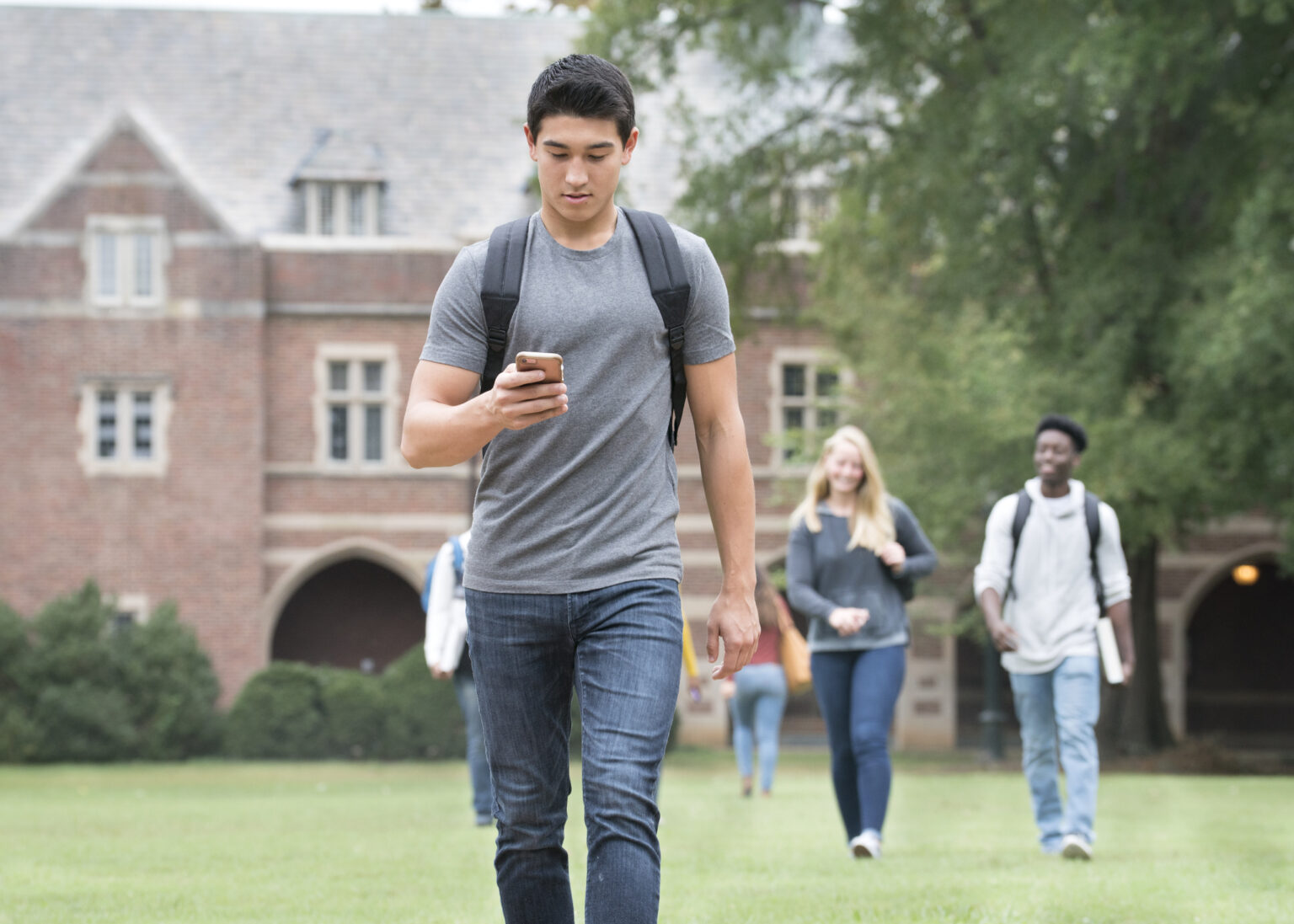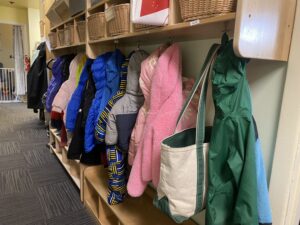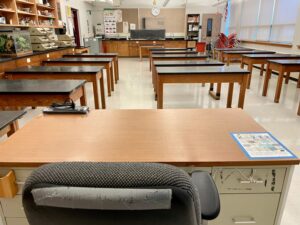5:58
News Story
Alaska joins growing number of states considering crackdown on cellphones in schools
Most U.S. adults support cellphone bans in middle and high schools, research shows
Alaska has joined a growing number of states that are considering cellphone restrictions in schools.
Alaska’s Board of Education and Early Development directed the state’s education department to create a policy that limits the use of cellphones in schools during class hours at a meeting this month.
Currently, there is no statewide cellphone policy in Alaska and any restrictions must be set at the district or school level. A number of schools have already done that.
The principal of one such school, David Booth of Palmer High School, implemented a cellphone ban as a pilot program this year. He described the results as transformative.
“Cellphones distract kids,” he said. “There’s no way around it.”
After just about a month of the ban, Booth said teachers reported that students are more engaged and that they turn in their classroom assignments more often. They talk to each other in the cafeteria and in the halls. And the need for discipline has dropped precipitously — he said that last year administrators and teachers dealt with cyberbullying three to four times a week, but in the last five weeks he has had only two incidents.
He said those results point to progress on two major issues: educational outcomes and mental health.
“Those devices are engineered to be addictive, 100%. So, that’s why we’re doing it. We’re not trying to take anybody’s freedom away. We’re not trying to not allow parents to get a hold of their kids,” he said. “If we’re going to improve schools in Alaska, and in our school district and Palmer High School itself — if we’re going to improve this school and really provide the best education we can — it takes everybody. And everybody means we need our students to engage, which means we can’t have a cellphone in their hand distracting.”
At Palmer, students are required to keep their phones in a locked pouch during school hours. If a teacher or administrator sees a phone, they confiscate it. The student’s parents must pick it up at the end of the day. Booth said he suspects the immediate parent involvement may be as much a deterrent as the pouch. Previously, he said, parents were only required to be involved at the third phone confiscation.
In Anchorage, both Wendler Middle School and South High School implemented phone bans last year and have kept them in place this year.
They, like Booth, have noticed a drop in cyberbullying and an increase in classroom engagement.
Wendler Middle School Principal Marcus Wilson said parents have “loved” the ban on phones, which he said are in line with the school’s focus on mental health for students.
“Overwhelmingly, the parents were in support of it and thanked us, because they said it really takes the fight out of their hands,” he said.
The roughly 650 sixth, seventh and eighth graders at Wendler are required to put their cellphones and devices in their lockers by 9:30 a.m. and may not retrieve them until school lets out at 4 p.m., he said.
While Wilson said the school is waiting to see what their data says about academic outcomes and mental health changes quantitatively, he has anecdotal evidence that the ban has benefits for students.
“I could tell our students feel better being here at school,” he said.
He did point to one concern voiced by parents, which is that they wanted to be in contact with their children if there were an emergency at the school. But Wilson said first responders and law enforcement say that calls going to and from individual children in an emergency can actually hinder an effective response.
South High School has had varying restrictions, but this year is its most restrictive outright ban on cellphones yet. Students leave their phones with their teachers at the beginning of class and may only use them at passing periods and at lunch. Last year, students were allowed to use them for coursework in classrooms — as a scientific calculator, for example.
Principal Luke Almon said there’s no data for this year yet, but initial results from the partial ban last year have been positive.
“Even with the partial ban, what I would call the objective measures of school climate went up,” he said.
Staff at the school said the quality of student-to-teacher relationships improved significantly. Almon said he thinks removing the distraction of cellphones and focusing on in-person communication is what improved those relationships.
“Generally speaking, every academic growth measure on math and English grew… so we just have to wait for a second year of data, because we haven’t administered the full scope of those tests and those surveys yet this year,” he said. “But I will say, just from the anecdotal side of things, that we have a much easier time getting subs to work in our building because they don’t have to fight cellphones.”
Almon said he’s had to strike a tough balance as a high school principal: he wants to honor the autonomy and decision-making skills of the young adults in his school, but he also wants to remove the distractions that get in the way of learning and community-building.
He said his advice to school or districts looking at bans is to bring parents and the public into the conversation.
“I think most people at this point have come to realize that if you’re going to learn efficiently, you need to be able to focus on one thing at a time and spend concentrated time on it,” he said.
“So I don’t think it’s controversial, but certainly making sure to get parent and student input and to work with other groups who interact with the school is pretty important, so that there can be a collective responsibility for returning to what I would call just a more humane, more peaceful and more interpersonal, connected kind of environment at school.”
At least five states already have cellphone restriction policies that are recommended by their education departments, like the one Alaska will develop: Alabama, Connecticut, New Hampshire, Washington and West Virginia. Lawmakers in a dozen states have introduced legislation that would implement phone bans or restrictions. Eight states, including California, Florida, Indiana and Louisiana have implemented them.
Nationally, more than 70% percent of high school teachers say cellphone distraction is a major problem in the classroom and nearly 70% of adults say they would support a ban on middle and high school students using cellphones during class, according to recent findings from the Pew Research Center. The issue does not appear to be partisan.
Recent studies have borne out the effects that Alaska’s teachers have begun to observe in their phone-free classrooms. A 2021 study on college students found that “students whose smartphones were physically removed during class had higher levels of course comprehension, lower levels of anxiety, and higher levels of mindfulness than the control group.”
Gov. Mike Dunleavy said he supported the board’s resolution in a recent news release.
“I applaud the State Board of Education for advancing this resolution, and I hope all of Alaska’s local school boards seriously consider updating school cellphone policies to improve student learning,” he said.
Education Commissioner Deena Bishop indicated that she would like to see the state take the lead on cellphone restrictions. It was a memo from Bishop that asked the board to put DEED in charge of drafting the model cellphone policy for the state.
“Leaving this to individual teachers or families sets them up for failure—in the ever-present social media world, supporting one message about the focus of learning and engagement in schools will matter most in supporting our young people,” she said in the release.
GET THE MORNING HEADLINES.
Our stories may be republished online or in print under Creative Commons license CC BY-NC-ND 4.0. We ask that you edit only for style or to shorten, provide proper attribution and link to our website. AP and Getty images may not be republished. Please see our republishing guidelines for use of any other photos and graphics.





